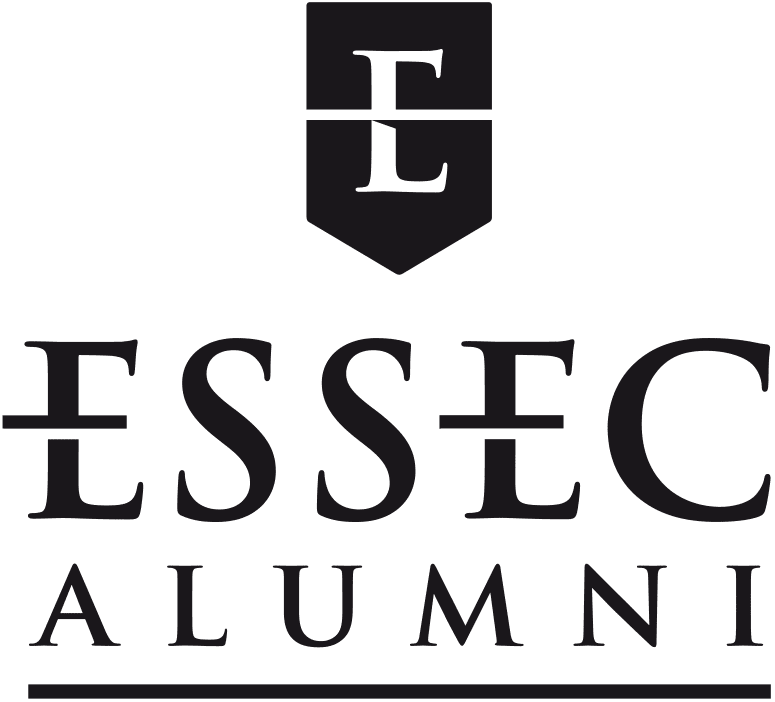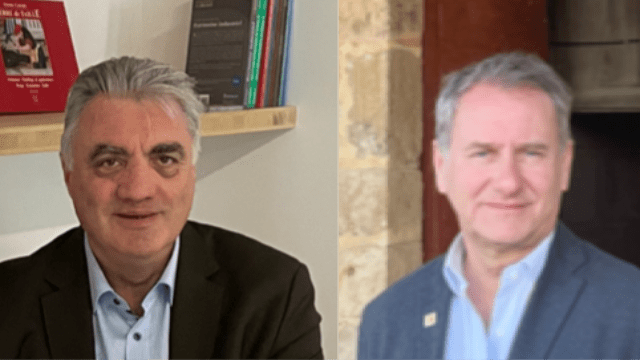Stéphane Leroux (E84) and Jean Mortier (E82) Act for the Heritage Foundation
Stéphane Leroux (E84) and Jean Mortier (E82) are respectively Departmental Delegate Île-de-France and Volunteer Theme and Departmental Delegate Landes for the Heritage Foundation [La Fondation du Patrimoine]. They explain their roles and call on ESSEC members to join them.
ESSEC Alumni: What are the aims of the Heritage Foundation?
Stéphane Leroux: The main aim of the Heritage Foundation is to safeguard local and rural heritage, which forms the basis for its other actions, such as access to culture, transmission to future generations, the development of local economy and job creation (specifically through tourism and craft trades). The Foundation employs around 100 people and has 900 volunteers throughout France.
EA: What specific ‘heritage’ does the Foundation look after?
Jean Mortier: We look after heritage which is not protected from a legal point of view, whether it is built heritage, parks, gardens, furniture or vintage cars, under public or private ownership. The property in question must also be available for public viewing, whether simply in the street or in the context of exhibitions and visits.
EA: How is heritage protected in France?
S. Leroux: The legislation provides for two measures. The first is the classification or listing as a historical monument, which offer two levels of protection. The State provides generous funding for the restoration of these assets, in exchange for a very strict specifications brief. The second tool is the Outstanding Heritage Sites certification. Visible works to property located within these geographical areas are subject to approval from the French Architects’ Body (Architectes des Bâtiments de France, or ABF).
J. Mortier: The Heritage Foundation targets property which is not under legal protection but which merits preservation. This represents a huge variety of assets, often local and rural, owned by private individuals or local authorities, and includes built heritage (churches, mills, the homes of famous figures, etc.) and other items (furniture, transport, natural heritage and biodiversity).
EA: What ties does the Heritage Foundation have with the French State?
S. Leroux: We are a private foundation of recognised public utility. Our actions are thus both independent and complementary to those of the State. We provide our support to the Heritage Task Force [Mission Patrimoine], entrusted to Stéphane Bern, by raising private (donations and corporate patronage) and public funds (public grants, unclaimed inheritance or the Heritage Lottery).
EA: What is your involvement in the Heritage Lottery?
J. Mortier: Our departmental delegates put forward projects to the Heritage Task Force, which selects one project per year per department in addition to 18 emblematic projects of national interest. The Heritage Foundation contributes to identifying projects and preparing application files, allocates Lottery funds and monitors works.
EA: In addition to the Heritage Lottery, how do you raise funds?
S. Leroux: We use three main channels. Firstly, through Heritage Foundation certification, which enables individual owners of assets located in municipalities of less than 20,000 inhabitants and/or in an outstanding heritage site to deduct the cost of works from their taxable income (up to a certain limit). Secondly through donations, which are generally collected for specific projects and most often to the benefit of local authorities or outstanding heritage owners’ organisations. In this case, donors also benefit from income or property wealth tax reductions. Lastly, through corporate patronage, most often for large-scale projects, which also entitles companies to tax deductions.
EA: What kind of amounts do you raise?
J. Mortier: In 2021, we raised €15 million through our collections and €51 million through patronage and sponsorship. We also attributed more than 25,000 certifications which generates an average of €55,000 per worksite. In all, we were thus able to fund €595 million in works (excluding Notre Dame Cathedral).
EA: What projects does the Heritage Foundation have for the coming years?
S. Leroux: The Heritage Foundation will bolster its actions to safeguard natural heritage and biodiversity, in addition to the integration of eco-renovation in built heritage restoration projects, by drawing on external expertise and volunteer delegates assigned to these areas.
J. Mortier: Our teams are also working to modernise our tools and operating methods, specifically through digitalisation, in order to develop online donation and broaden our donor targets.
EA: Does the Heritage Foundation intervene on an international level?
S. Leroux: Our task is not to operate on an international level, but we do have donors worldwide, particularly since the fire at Notre Dame de Paris, which lent us greater visibility outside of France and triggered a wave of international generosity. We would also like to reach more overseas donors, as well as French nationals living elsewhere. We’re organising an information event in London soon.
EA: Both of you are volunteer delegates for the Heritage Foundation? What are your tasks and duties?
S. Leroux: The Heritage Foundation has 21 regional delegations, which are all overseen and coordinated by a volunteer member. This delegate works with regional, departmental and theme delegates (in architecture, communication, fundraising or photography, etc.) to identify projects, support project holders in administrative and technical aspects, and meet with local elected representatives and policy-makers.
EA: What recent actions have you led as a volunteer delegate?
J. Mortier: I had a wonderful experience in Lencouacq, a small village in the north of the Landes region, which is home to a superb 18th century church in need of work amounting to a colossal sum for a community of 450 inhabitants. Around this project, I brought together the mayor, the Friends of the Church association, departmental, regional (DRAC) and national bodies likely to provide subsidies, the local ABF architect and a major donor. We worked together to find funding solutions and draft a schedule for action. This is just the beginning of the safeguard plan, but it demonstrates the key role we play.
EA: How much is required of a volunteer in terms of involvement?
S. Leroux: On average, a volunteer needs to devote 20% of their time to the proper execution of their tasks. They can, however, organise their time as they please. The idea is also to commit for several years, in order to capitalise on experience and pass this on to future volunteers. Each volunteer has access to a range of resources to boost their skills, such as national and regional integration programmes and the heritage portal with its tutorials, remote training courses, databases and support from experts in the headquarters, etc.
J. Mortier: The reward for this commitment comes from the wonderful encounters we have in the course of our work and from the satisfaction of literally seeing the impact of our actions. When I travel around the department, it’s very rewarding to see a house or a bell tower which has been properly restored thanks to our involvement!
EA: What does the Heritage Foundation look for in its volunteer delegates?
S. Leroux: Volunteers come from a broad variety of backgrounds. Some have held management, sales and marketing or technical support positions in the private sector, others have come from local authorities or public sector administrations. You don’t need to be an architect, heritage engineer or building professional. Many volunteers have time on their hands, or are retired, but we also have students and people in active employment who are lucky enough to have flexible schedules.
EA: How can ESSEC members become volunteer delegates of the Heritage Foundation?
S. Leroux: The Heritage Foundation needs your skills in management, finance, marketing, strategy and auditing, in addition to your experience in high-level business dealings. Don’t hesitate to apply via our website. If you would like to learn more before joining us, visit the heritage portal and/or contact the regional delegations directly, or via Anne Théry in the Human Resources department (anne.thery@fondation-patrimoine.org).
Interview by Louis Armengaud Wurmser (E10), Content Manager at ESSEC Alumni.
Want more content? Join us now so that we can keep bringing you news about the ESSEC network.

Comments0
Please log in to see or add a comment
Suggested Articles



